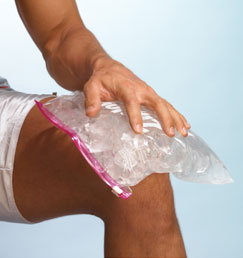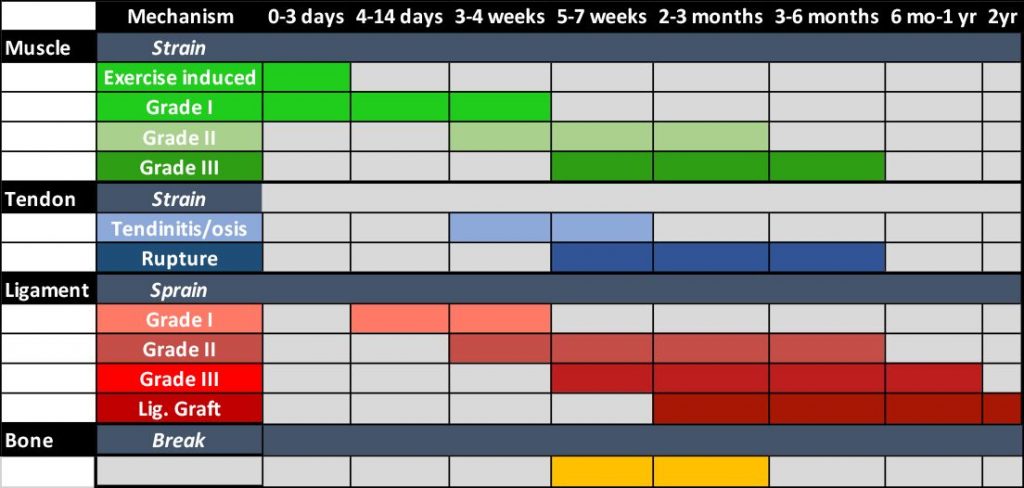On the Mend
 On the Mend
On the Mend
As we quickly approach the holy grail of running events, the Boston Marathon, we start to see a rise in our battered and beaten road warriors. Overuse conditions from months of increased training, acute injuries from falls on slippery roads and chronic aches and pains, all result in the patient surrendering to the need for assistance.
As much as we are empathetic and desperately want our marathoners, as well as all of our patients to mend as quickly as possible, it is just not that simple. A common statement my patients will hear from me is; “these are hands, not magic wands.”
There is no magic bullet to expedite the healing process, only ways to avoid slowing down or interrupting the natural process. Just like Rome, the human body wasn't built in a day and it certainly doesn't repair itself in that time frame. The body's response to damage is complex. It depends on the extent of damage, the type of tissue, your age, your health and many more factors you cannot control. The process of tissue healing is similar in all tissues, but they don’t all heal the same way. This is due to factors such as blood supply to the area, function of the tissue and our ability to protect the tissue in response to an injury.
When you consider these variables in the healing process, you can begin to ‘estimate’ the appropriate healing time for your injury. As much as we know you don’t want to hear that ‘you should not run’ or ‘you need to stay off it’ in order to allow for proper healing, it will never change the reality that tissues repair based upon our ability to allow the process to occur.
Consider the act of biting you lip. If you want that lip to heal, how often do you think you can continue to bite it as it’s trying to mend? The same logic is applicable to an injury. If you have a ‘Grade I’ knee sprain, the estimated healing process is anywhere from 3 days to 4 weeks. What amount of continued running & jumping would be appropriate? The chart below is a good guide for you to better understand the tissue repair process. As you will see, there are wide ranges of recovery times. These are NOT solely based upon the injury but include the factors we mentioned above. Massage, as an instrument in your recovery, can help to facilitate what your body is already trying to do naturally. However, it can be even more helpful by communicating to the brain through graded exposure to touch and movement, providing a message of safety, hence down grading the pain you may experience.
Factors that Impact Tissue Repair
- Severity of injury
- Loading: Too much or too little will impact the process. Always know the proper amount.
- Movement: Repetitive movement patterns and altered movement can stress injured tissues
- Hydration: Dehydrated tissues heal slower
- Inflammation: Systemic inflammation due to stress, poor nutrition, lack of sleep and other risk factors can impede healing
- Sleep: This is essential for tissue/cellular repair and inflammation control
- Cardiovascular Health: Need good circulation
BUT the pain is gone! Isn’t it healed?
- The absence of pain IS NOT a good indicator for healing or tissue remodeling
- Pain can usually be controlled with manual therapy and altered movements and loading patterns
- The injury still needs time to remodel. It will be at risk of reinjury or recurrence until complete remodeling has occurred
What’s the Grade mean for Sprains or Strains?
- Grade 1 (mild):Only some of the fibers in the ligament, tendon or muscle are torn, and the injured site is moderately painful and swollen. Function in the joint will be unaffected for the most part.
- Grade 2 (moderate):Many of the ligament, tendon or muscle fibers are torn, and pain and swelling is moderate. The functionality of the joint is compromised.
- Grade 3 (severe):The soft tissue is completely torn, and functionality and strength on the joint is completely compromised. In most cases, surgery is needed to repair the damage.

Ready to #feelbetter?
You're just a click away from a wicked good massage!
-

60 Minute Massage Gift Card
$170.00 Add to cart -

90 Minute Massage Gift Card
$255.00 Add to cart -

Mini Aer Small Room Air Purifier
$149.00 Add to cart -
Sale!

Thera-Pearl Sports Pack/Hot Cold
Original price was: $14.99.$12.99Current price is: $12.99. Add to cart -

3 Somadome Sessions Gift Card
$135.00 Add to cart -

TheraBand CLX Connective Loop
$14.99 Select options -

6 Somadome Sessions Gift Card
$270.00 Add to cart -
Sale!

Biofreeze
Original price was: $14.99.$12.99Current price is: $12.99. Add to cart
Please Pass the Mustard
I’m going to go way out on a limb and guess that the last time you had a leg cramp your immediate reaction was to either stretch it, rub it, ice it or a combination of any of these responses. What if I told you that you should eat some yellow mustard for an almost…
Read MoreCheers to More Energy, Mental Clarity and Focus in 2015!
The following post is contributed by Anne Turnbull. Ann is a global business development leader with Max International, a company in the forefront of glutathione research and development. She is a frequent presenter to audiences in Canada, US and Africa and is passionate about spreading the word about the importance of glutathione for good health.…
Read MoreWake Up and Smell the Coffee
Do you recall the days in college that you would brew a pot of coffee to get through the occasional all nighter? Today, you have an endless supply of vices to curb that ‘energy fix’ we all crave. From Red Bull to Death Wish coffee (yes, that’s an actual brand), you can all get your…
Read MoreRunning is as easy as 1-2-3
There are two kinds of runners in the world; those who love it and those who don’t. I am definitely the latter of the group. However, the one thing they all have in common is, you guessed it, running. Regardless of whether you are enjoying your time on your run or not, we all know…
Read MoreHead Games
To paraphrase the great Yogi Berra; Running is 90% physical and the other half is mental. No one ever claimed to understand the old Yankee skipper, but we knew what he was attempting to say when he was discussing the ability to master the game of baseball. The same holds true with running (and many…
Read MoreWhat’s the Scoop on your Poop?
Being the father of two little girls, I know I have my work cut out for me. I have come to accept that there are lessons that I can teach my children and there are others lessons they will simply have to learn through personal experience. One of the lessons I constantly remind them of…
Read MoreYour Referrals Can Be A ‘Real’ Pain
No, I don’t mean the favor of your referrals of friends and family. We LOVE to get those. Today I want to talk about a type of pain known as ‘referred pain’. Referred pain is something that all of us have experienced at one time or another, yet may not have known what was happening.…
Read MoreWhat are Shin Splints?
What are Shin Splints? We treat a lot of different conditions at The Boston Bodyworker, ranging from general stress and fatigue to chronic pain. One of the more popular complaints we get from our running population is shin splints. If you have ever had them, you know how uncomfortable the pain can be and how…
Read MoreLet’s Talk About Sex!
There are three areas of conversation that we are told too avoid at all cost while in the treatment room; sex, politics and religion. These subjects are clearly based upon ones personal opinions and beliefs and are rarely needed to provide sound clinical outcomes in massage therapy. Today, I am making an exception. New research…
Read MoreTips on “That” Tape
Over the past year or so, we have seen a heightened interest in “that cool looking tape” otherwise known as kinesiology tape. The tape has become more and more popular and is now even being sold in places like Target and City Sports. To weekend warriors, success with this new tape has been a bag…
Read More
